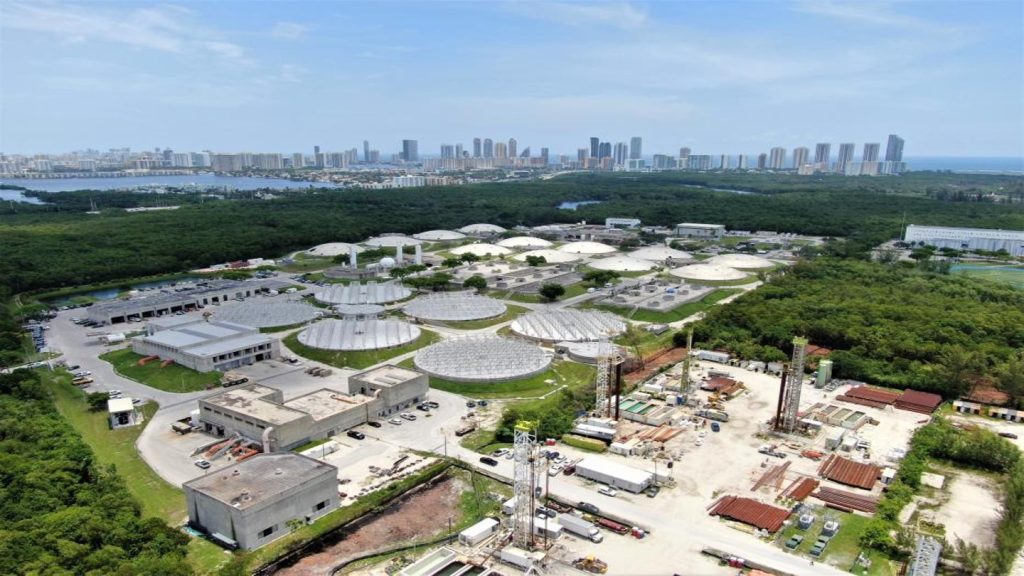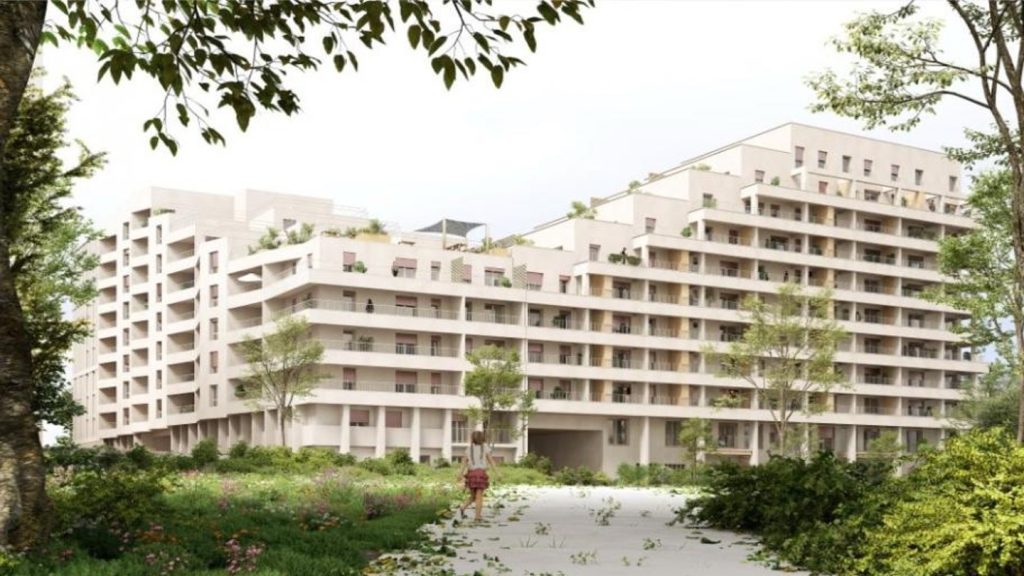One of the biggest humanitarian challenges the world faces today is the provision of shelter. In 2008, for the first time more than half of the world’s population lived in towns and cities. By 2030 this number will increase to almost five billion, thanks in particular to human growth in Africa and Asia.
Along with the trend of urbanisation comes the urbanisation of poverty. The United Nations Population Fund (UNFPA) reports that one in seven people live in slums or refugee camp, while more than three billion people do not have access to clean water or adequate sanitation. In the hope of finding better social and economic opportunities, many people migrate to cities and often end up in shanty towns and ghettos.
"Architecture originated as humanitarian," writes a user in the ‘disaster relief / humanitarian architecture’ forum of the US-based architectural network Archinect. "It was shelter, it was sacred space, it was meeting grounds for communities to come together."
However, today’s industry mostly serves 10% of the population, namely high-end clients in well-developed urban spaces. Too often skilled architects and engineers are desperately needed in places where they are least afforded. Humanitarian architecture, seeking architectural solutions to humanitarian crises and bringing professional design services to communities in need, tries to fill this void.
Humanitarian architecture
At the forefront of the movement is the San Francisco-based non-profit organisation Architecture for Humanity. In 1999, architect Cameron Sinclair and journalist Kate Stohr launched the organisation, discovering an untapped interest in non-profit work. They realised that many refugee crises need design expertise that could not be met by existing channels for volunteer work.
See Also:
Since then, Cameron and Stohr have created a global network of 50,000 architects, designers and other professionals working to bring construction and development to communities in need. Their motto ‘design like you give a damn’, reflects their main message that good design is not just a luxury, but also a necessity.
How well do you really know your competitors?
Access the most comprehensive Company Profiles on the market, powered by GlobalData. Save hours of research. Gain competitive edge.

Thank you!
Your download email will arrive shortly
Not ready to buy yet? Download a free sample
We are confident about the unique quality of our Company Profiles. However, we want you to make the most beneficial decision for your business, so we offer a free sample that you can download by submitting the below form
By GlobalDataIn the UK, London-based charity Article 25 works towards the same target. Named after the 25th article of the Universal Declaration of Human Rights, the organisation was founded by Maxwell Hutchison after he saw the destruction and devastation of the Asian tsunami in December 2004 in Sri Lanka. Hutchison also recognised the potential role that architects could play in enabling quicker reconstruction. Today, Article 25 works in disaster and poverty-stricken areas all over the world, trying to put quality construction into long-term charitable, humanitarian and development work.
The mission of the two organisations is similar: with design and architecture skills they want to tackle the most pressing construction challenges in the developing world. In an effort to create long-term projects that equip local people with the skills they need to build their own sustainable housing, they collaborate with communities and governments globally.
As with any other aid programme, humanitarian architecture works towards long-term goals. Every project is made a training programme for local builders and engineers.
"We are generally working in areas where the skills don’t exist so it’s critical that we play our part in rebuilding the skills of practitioners and builders in the country," explains Article 25 CEO and director of projects Robin Cross. "All of the work in international development needs to be aimed at leaving behind not just a building but an improved capacity to build. Each project becomes a training programme for the local community to build for themselves."
Bureaucratic challenges
Both Article 25 and Architecture for Humanity have no difficulties finding enthusiastic designers and engineers for the projects, but one of the biggest challenges is the slow official path every project has to take even when aid is needed immediately.
"The usual pattern of reconstruction in international development is that the NGO will make a visit in the area an earthquake or a tsunami has happened," says Cross. "NGOs do an assessment, we write a report and go back to the base to make some funding applications, meet the government and six to eight months later we get down to rebuilding; however, a good technical team can have temporary housing up and running within a week.
On a completely different scale are projects in poverty and war-stricken areas, such as those in West Africa.
"Most of the countries have been in and out of civil war for 20 or 30 years," says Cross.
Article 25 is working in cooperation with the government of Sierra Leone on creating a series of buildings on the borderland between Sierra Leone and Nigeria. Cross says that there are 11 architects in Sierra Leone.
"How can 11 architects, most of them trained in Europe in the 1970s, rebuild this country and develop models of sustainable resource use?" he asks. "That is where architects in international development have got a role."
Another major challenge is the lack of building regulations in most of the countries humanitarian organisations work in. Cross claims even where regulations exist, they would not necessarily stop local engineers and builders to construct a house in an unsafe way.
"But it’s important that this is not a place where you can use any less judgement as an architect," he says. "If regulations don’t exist, you use your professional judgement to identify valuable rules and you can take them to places where it’s appropriate. It’s not an environment where rules are relaxed."
Cross-cultural dynamics
Capita Symonds Architecture senior associate director Richard Woods has experienced the challenges of humanitarian architecture. Talking at the NLA Breakfast Talk on Humanitarian Architecture in London, UK, in May 2011, he stressed the importance of understanding the dynamic of a country and its population. In cooperation with the Acacia Partnership Trust, Woods has been working on the Wakkil Alla primary school project in the market town of Gorom-Gorom in Burkina Faso.
Full of fresh and modern ideas, Woods and his design team travelled to West Africa and quickly learned that experimental designs were out of place.
"We wanted to do something quite experimental for the school building, but in the end we backed off and built something fairly traditional," said Woods, who works on the project mostly in his free time. "There came a point where we possibly could have pushed through our idea, but it would have been against the will of the local people. It might not be what I had initially chosen, but it’s an important part of the nature of relationships across culture and across continents."
Nevertheless, the project is well underway with phase I, which includes three classrooms and three teacher houses, nearly completed. Burkina Faso is one of the three poorest countries in the world and has the lowest level of literacy of any nation. The school has an open admissions policy and has been developed to a conventional design: two parallel blocks of three classrooms with rendered cement block walls and a profiled metal roof.
The second phase will start soon, and will consist of three additional classrooms, an outdoor recreational space and other functional facilities. The final phase, which will take place in 2014-15, eventually aims at the electric and water supply and includes play and garden areas.
Case study: Iron Market, Port-au-Prince, Haiti
Away from housing and school buildings is a project conducted on a non-for-profit basis by British architects John McAslan + Partners (JMP) in Port-au-Prince, Haiti. Destroyed by a 2008 fire and the earthquake in 2010, the market, which was built in 1891, has been a cultural, historic and architectural landmark, a major commercial and social hub and is known as an iconic building throughout Haiti.
The £3.2m project, funded by one of Haiti’s largest employers, entrepreneur Denis O’Brien, included the restoration of the damaged south market and the two towers. One year after the earthquake took place, former US president Bill Clinton officially inaugurated the new market on 11 January 2011.
The new market houses 800 stalls for the traders, whose traditional crafts are seen as crucial to the city’s revitalisation plans. The two towers, which were left tilting precariously after the magnitude 7 quake, were stabilised and straightened, and include current thinking on earthquake resistance and seismic requirements.
According to the architects, the biggest challenge of the project was the tight time frame and the delicate renovation of the tower and minarets, which were disassembled in mid-2010 and renovated by local artisans. Also, the cast-iron columns of the market hall were refurbished by local specialists in iron welding, and reinstalled. Only one week before the official inauguration, at least 500 Haitians provided the finishing touches to finish the market on time for the first anniversary of the earthquake.
When addressing the crowd at the inauguration, Clinton referred to the market as a "bright beacon" of hope in rebuilding Haiti. Shortly after, local producers began trading again. It seems that while architecture is not the whole solution, it is unquestionably part of the solution to help people in need.





